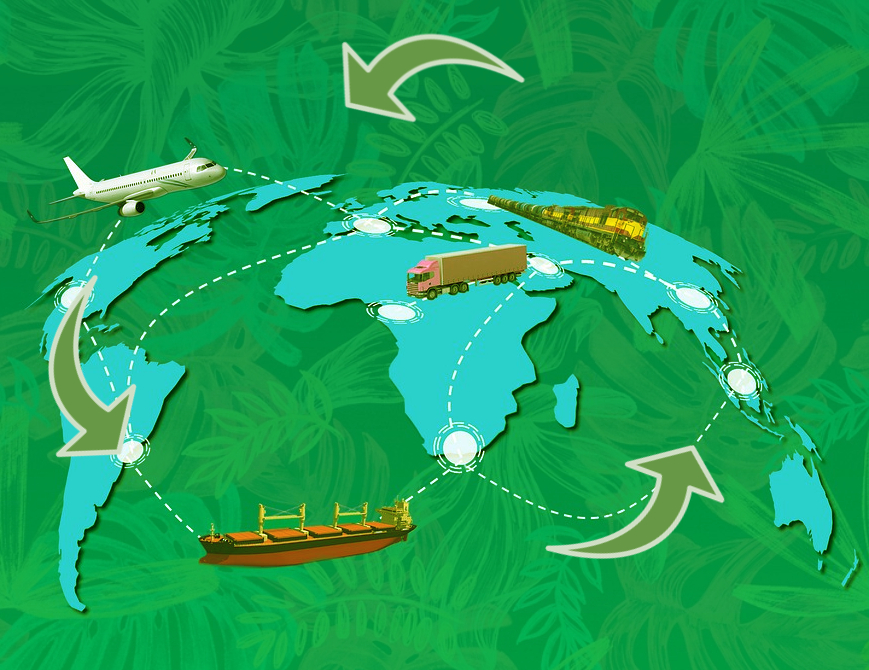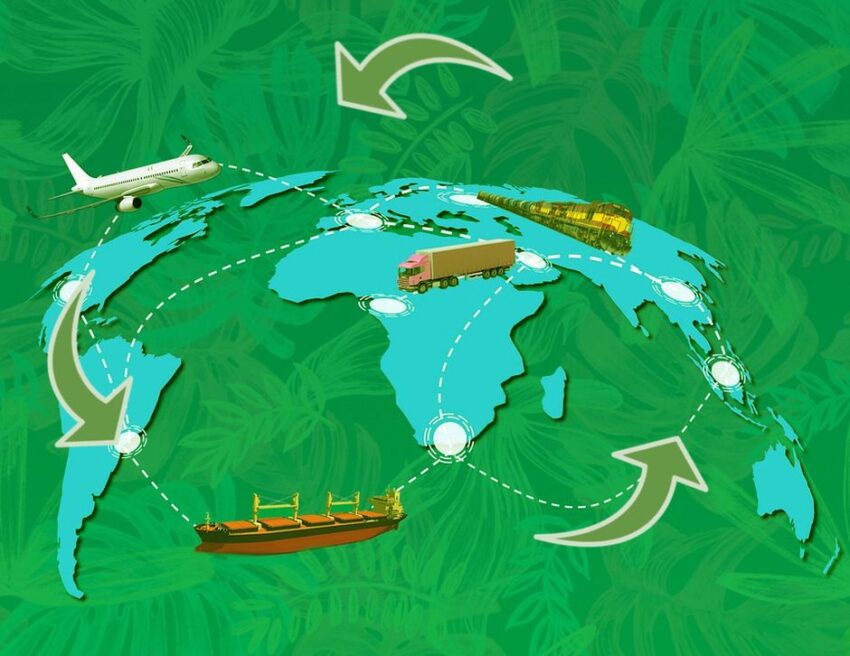Following the COP 26 UN Climate Change Conference, port authorities around the world are working to create zero-carbon emission shipping corridors. The Port of Los Angeles and the Port of Shanghai are the first international ports to team up for the creation of a ‘green shipping corridor’. This corridor on one of the world’s busiest container shipping routes will have far-reaching consequences for the ocean freight shipping sector. The primary aim of the partnership is to lower the emission of greenhouse gases for moving cargoes between the largest ports in the U.S. and China.
To quote Mark Watts, Executive Director of C40 Cities, “By convening international coalitions of the willing and creating a scalable and replicable model for other cities to follow we hope this ground-breaking green shipping corridor initiative will catalyze action on a global scale…Accelerating efforts to decarbonize the shipping sector is urgent if we are to limit global heating to 1.5 degrees.” Read on to find out the details about the creation of the ‘green shipping corridor’ and how it would affect the global ocean freight shipping sector.

The goal behind the creation of the Green Shipping Corridor
The parties involved in the Green Shipping Corridor partnership include the City of LA, the City of Shanghai, the Port of Shanghai, the Port of Los Angeles, and the C40 cities. The alliance is committed to implementing a concrete plan for the Green Shipping Corridor by the end of this year. The bottom line of the partnership is to decarbonize the ocean freight shipping sector. Eric Garcetti, the Mayor of Los Angeles launched the C40 Green Ports Forum intending to decarbonize the international supply chain. The Port of LA under his leadership has played a crucial role in the formulation of this partnership.
The major decarbonization goals for the Green Shipping Corridor are as follows:
- The introduction of ships with extremely low or even zero carbon emissions is a part of the plan. Moreover, there is a focus on the use of zero-cargo trans-Pacific freight ships that will be launched by 2030.
- Another objective is to come up with sound management principles. The aim is to reduce emissions and enhance the efficiency of the ships that ply this international shipping corridor.
- Lastly, the partnership aims to lower the supply chain emissions from the ports. The goal is to lower the pollution in and around the ports at LA and Shanghai.
The participating partners of the Green Shipping Corridor
The partnership for the creation of this corridor also includes several major players in the sea freight shipping sector. Maersk, CMA CGM, COSCO Shipping Lines, and Shanghai International Ports Group (SPIG). Additionally, other players in this partnership include the Shipping Decarbonization Initiative of Aspen Institute, coZEV or Cargo Owners for Zero-Emission Vessels, and the Maritime Technology Cooperation Centre in Asia.
In the words of Gene Seroka, the Executive director of the Port of LA, “International collaboration is essential to decarbonise global supply chains. We look forward to partnering with the Shanghai Municipal Transportation Commission, the Shanghai International Port Group, leading shipping lines and major cargo owners to reduce greenhouse gas emissions in the maritime supply chain. It’s time to get started on this important work.”
Green Shipping Corridor endeavours in the North Atlantic
The Port of Antwerp and the Port of Montreal have also teamed up to create the first Green Shipping Corridor in the North Atlantic. The port authorities of these two ports aim to mobilize their private and public sector partners to contribute to the adoption of shared solutions and resources. Additionally, their intention is to facilitate the transportation of green and renewable fuels like methanol and hydrogen.
In the words of Jacques Vandermeiren, the CEO of Amsterdam Port Authority, “The Port of Antwerp is one of the largest bunkering ports in the world. As such, the Port of Antwerp wants to play a pioneering role in the integration of carbon-neutral fuels in the bunkering market. In this way, together with the Port of Montreal, we are working on the transition to a multi-fuel port, with renewable fuels that are better for the climate and the quality of the air.”
How Green Shipping Corridors are enabling the decarbonization plans of the ocean freight shipping sector
The new partnerships for the creation of the green corridors are helping the sea freight industry to attain its objective of total decarbonization by 2050. The focus on renewable fuel pathways, mobilized demand, and value-chain endeavours are reasons for the shipping sector to be hopeful. However, to make a success of this plan, several stakeholders including manufacturers, fuel producers, and of course the ship operators need to unite and commit to a zero-emission shipping policy. Most importantly, the port authorities should also consider implementing targeted changes to further encourage decarbonization in shipping. If all the stakeholders come together to implement a consistent yet ambitious green shipping corridor plan, then it would be a major step for the shipping sector towards net zero-emission.


